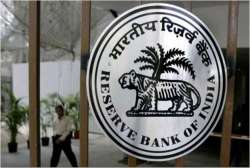RBI Moratorium: 10% provisioning may shave Rs 35,000 cr off bank profits
The Reserve Bank of India''s directive asking banks to make 10 per cent provisions on all moratorium loans will shave at least Rs 35,000 crore off their profitability in financial years 2019-20 and 2020-21, according to a report.

The Reserve Bank of India''s directive asking banks to make 10 per cent provisions on all moratorium loans will shave at least Rs 35,000 crore off their profitability in financial years 2019-20 and 2020-21, according to a report.
On Friday, the central bank, in its second set of liquidity-enhancing measures announced Rs 1 lakh crore specifically targeted fund infusion to small- and mid-sized shadow banks, home financiers and micro-lenders, which will ultimately go a long way in offering some succour to the small and medium enterprises.
"While the liquidity boosters will help the small lenders, the RBI has also stipulated banks to create a 10 per cent provisioning on all loans that are overdue but not yet NPAs (non-performing assets) wherein the moratorium is on, over the March and June quarters. This will impact their profitability by Rs 35,000 crore in the March and June quarters," Brickwork Ratings said in a weekend note.
The new provisioning requirement has to be made for the March and June 2020 quarters and this will impact their profitability in 2019-20 and 2020-21.
The agency said its assessment is based on its assumption that at the system-level banks'' ability to manage asset quality in the near-term post the moratorium remains a critical monitorable concern even though they could be able to manage the funds for the provisioning by adjusting against the provisioning for slippages to NPAs in the financial year 2020-21.
Banks will have to categorise the moratorium loans as special mention accounts (SMA) wherein loans are in the 0-90 days overdue buckets.
"As per our estimates, the stipulation on additional 10 per cent provisioning could increase total provisioning by Rs 35,000 crore in the March and June quarters. This assumes SMA accounts are around 4 per cent of total system level advances and are in moratorium.
"Such a large hit on profitability will also impair the capital positions of banks, especially state-run banks many of which continue to report losses for nine months ending December 2019. It may also necessitate further capital infusion into them," the agency said.
After pumping in almost 3.2 per cent of GDP worth liquidity into the system since the February 6 monetary policy to help the economy fight the COVID-19 pandemic spawn disruption, last Friday, the RBI announced another Rs 1 lakh crore of liquidity boost specifically for NBFCs, housing finance companies (HFCs) and MFIs, which analysts and shadow bankers will ultimately help small businesses the most.
The latest measure has come as two of its most innovative liquidity measures worth Rs 2 lakh crore since February 6 did not elicit the desired effect.
On Friday, in the second COVID-19 booster dose, the RBI announced a new targeted long-term repo operation (TLTRO), under which it will pump in Rs 50,000 crore into the system, and made it mandatory for banks to invest 50 per cent of the money in lower-rated debt being issued by small and medium NBFCs, HFCs and MFIs.
Apart from the new TLTRO window, the RBI has also opened another Rs 50,000 crore in refinance window for NABARD, SIDBI, and the National Housing Bank by way of cutting the reverse repo by 25 basis points to 3.75 per cent.